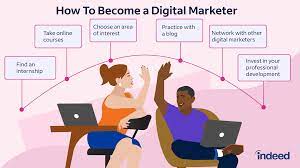Marketing Campaigns: Strategies to Drive Success
In today’s competitive business landscape, marketing campaigns play a crucial role in driving brand awareness, attracting new customers, and boosting sales. A well-executed marketing campaign can make all the difference in achieving your business goals. In this article, we will explore some key strategies to help you create effective and impactful marketing campaigns.
- Define Your Objectives: Before launching any marketing campaign, it’s essential to clearly define your objectives. What do you want to achieve? Is it increasing brand awareness, generating leads, or promoting a new product? Setting specific and measurable goals will guide your campaign strategy and help you track its success.
- Know Your Target Audience: Understanding your target audience is fundamental to creating successful marketing campaigns. Conduct market research to identify their demographics, interests, pain points, and purchasing behaviors. This knowledge will enable you to tailor your messaging and choose the most effective channels for reaching them.
- Develop a Compelling Message: Craft a clear and compelling message that resonates with your target audience. Highlight the unique selling points of your product or service and communicate how it solves their problems or fulfills their needs. Use persuasive language that evokes emotions and motivates action.
- Choose the Right Channels: With numerous marketing channels available today, it’s crucial to select the ones that align with your target audience’s preferences and behaviors. Whether it’s social media platforms like Facebook or Instagram, email marketing, content marketing through blogs or videos, or traditional advertising methods such as print or television – choose channels that maximize reach and engagement.
- Create Engaging Content: Content is king in any marketing campaign. Develop high-quality content that educates, entertains, or inspires your audience while aligning with your brand identity. Utilize various formats such as blog posts, videos, infographics, or interactive quizzes to capture attention and encourage interaction.
- Implement a Multi-channel Approach: To maximize the impact of your marketing campaign, consider implementing a multi-channel approach. This means integrating your message across different platforms to reach your audience at various touchpoints. For example, you can combine social media advertising with email marketing and content creation to create a cohesive and consistent brand experience.
- Monitor and Analyze Results: Regularly monitor and analyze the performance of your marketing campaign to gauge its effectiveness. Use analytics tools to track key metrics such as website traffic, conversion rates, engagement levels, and ROI. This data will provide insights into what’s working well and what needs improvement, allowing you to make informed decisions for future campaigns.
- Adapt and Iterate: Marketing campaigns are not set in stone – they require continuous monitoring, adaptation, and iteration. Pay attention to feedback from your audience and be willing to make adjustments along the way. Stay up-to-date with industry trends and evolving consumer preferences to ensure your campaigns remain relevant.
In conclusion, effective marketing campaigns are essential for business success. By setting clear objectives, understanding your target audience, crafting compelling messages, choosing the right channels, creating engaging content, implementing a multi-channel approach, monitoring results, and adapting as needed – you can drive impactful marketing campaigns that yield positive results for your business. Embrace these strategies and take your marketing efforts to new heights!
Frequently Asked Questions: Marketing Campaigns
- What are the 3 types of campaign?
- What is an example of a campaign?
- How do you create marketing campaigns?
- What is in a marketing campaign?
- What are the marketing campaigns?
- What are best marketing campaigns?
What are the 3 types of campaign?
There are various types of marketing campaigns, but three common types include:
- Brand Awareness Campaigns: These campaigns focus on increasing visibility and recognition for a brand. The primary goal is to create familiarity and positive associations with the brand among the target audience. Brand awareness campaigns often utilize channels like social media, display advertising, influencer partnerships, and content marketing to reach a wide audience and generate brand recall.
- Lead Generation Campaigns: Lead generation campaigns aim to capture potential customers’ information and nurture them into becoming qualified leads. The focus is on attracting individuals who have shown interest in the product or service and converting them into prospects. Common tactics used in lead generation campaigns include landing pages, gated content (e.g., ebooks or webinars), email marketing, pay-per-click advertising, and lead capture forms.
- Sales Promotion Campaigns: These campaigns are designed to drive immediate sales by offering incentives or discounts to customers. Sales promotion campaigns typically have a time-limited nature to create a sense of urgency. Examples of sales promotion tactics include limited-time offers, flash sales, coupon codes, loyalty programs, contests or giveaways, and referral programs.
It’s important to note that these campaign types can overlap or be combined depending on specific marketing goals and strategies. Additionally, businesses may also run other types of campaigns such as product launch campaigns, customer retention campaigns, or rebranding campaigns based on their unique objectives.
What is an example of a campaign?
One example of a marketing campaign is the “Share a Coke” campaign by The Coca-Cola Company. This campaign aimed to personalize the Coca-Cola brand by replacing the iconic logo on Coke bottles and cans with popular names and phrases. The objective was to encourage consumers to find bottles with their own names or the names of loved ones, sparking an emotional connection with the brand.
The campaign utilized various channels, including television commercials, print advertisements, social media platforms, and even personalized vending machines. It encouraged people to share their experiences and photos with the personalized Coke bottles using the hashtag #ShareACoke.
The “Share a Coke” campaign successfully generated buzz and engagement among consumers worldwide. It created a sense of excitement as people searched for their personalized bottles and shared their experiences on social media. This campaign not only increased brand awareness but also fostered a sense of personal connection with Coca-Cola, leading to increased sales and customer loyalty.
Overall, this example demonstrates how a well-executed marketing campaign can leverage personalization, social media engagement, and emotional branding to drive success for a brand.
How do you create marketing campaigns?
Creating marketing campaigns involves several key steps that help ensure their success. Here is a step-by-step guide on how to create effective marketing campaigns:
- Define Your Objectives: Start by clearly defining your campaign objectives. What do you want to achieve? Is it to increase brand awareness, generate leads, drive sales, or promote a new product? Setting specific and measurable goals will guide your campaign strategy.
- Identify Your Target Audience: Understand your target audience by conducting market research. Determine their demographics, interests, pain points, and purchasing behaviors. This knowledge will help you tailor your messaging and choose the most effective channels for reaching them.
- Develop a Compelling Message: Craft a clear and compelling message that resonates with your target audience. Highlight the unique selling points of your product or service and communicate how it solves their problems or fulfills their needs. Use persuasive language that evokes emotions and motivates action.
- Choose the Right Channels: Select the marketing channels that align with your target audience’s preferences and behaviors. Consider social media platforms, email marketing, content marketing through blogs or videos, search engine advertising, influencer partnerships, or traditional advertising methods such as print or television.
- Create Engaging Content: Develop high-quality content that captures attention and encourages interaction. Utilize various formats such as blog posts, videos, infographics, interactive quizzes, or user-generated content to engage your audience and deliver your message effectively.
- Design Eye-Catching Visuals: Visual elements play a crucial role in capturing attention and conveying your brand message. Create visually appealing graphics, images, videos, or infographics that align with your brand identity and enhance the overall impact of your campaign.
- Implement a Multi-channel Approach: Consider implementing a multi-channel approach to maximize reach and engagement. Integrate your campaign across different platforms to reach your audience at various touchpoints consistently. Ensure consistent branding across all channels for a cohesive brand experience.
- Set a Budget: Determine your campaign budget and allocate resources accordingly. Consider the costs associated with advertising, content creation, design, and other promotional activities. Ensure that your budget aligns with your campaign objectives and expected ROI.
- Launch and Monitor: Execute your campaign as planned and closely monitor its performance. Use analytics tools to track key metrics such as website traffic, conversion rates, engagement levels, and ROI. Regularly analyze the data to gain insights into what’s working well and what needs improvement.
- Optimize and Adjust: Based on the insights gained from monitoring, make necessary adjustments to optimize your campaign’s performance. Adapt your messaging, targeting, or channels as needed to improve results. Continuously iterate and refine your campaign strategy based on feedback and market trends.
Remember that marketing campaigns are not one-time events but ongoing efforts. Regularly evaluate their effectiveness, adapt to changing circumstances, and stay up-to-date with industry trends to ensure long-term success in reaching your marketing goals.
What is in a marketing campaign?
A marketing campaign typically consists of several key components that work together to achieve specific marketing objectives. Here are the essential elements commonly found in a marketing campaign:
- Objective: Every marketing campaign begins with a clear objective or goal. This could be increasing brand awareness, driving website traffic, generating leads, promoting a new product or service, boosting sales, or any other measurable outcome.
- Target Audience: Identifying and understanding the target audience is crucial for effective campaign planning. By defining the demographics, interests, behaviors, and pain points of your target audience, you can tailor your message and choose the most appropriate channels to reach them.
- Message and Creative: The campaign’s message should resonate with the target audience and convey the unique value proposition of your product or service. The creative elements include visuals, copywriting, slogans or taglines, and any other content that communicates your message effectively.
- Channels: Choosing the right marketing channels is essential for reaching your target audience effectively. This could include digital platforms like social media (Facebook, Instagram), search engine advertising (Google Ads), email marketing campaigns, content marketing (blogs, videos), influencer partnerships, traditional media (TV ads, print ads), or a combination of various channels.
- Content Creation: Developing engaging content is crucial for capturing attention and delivering your message effectively. Content can take various forms such as blog posts, videos, infographics, images, interactive quizzes or games – whatever suits your target audience’s preferences and aligns with your campaign goals.
- Timing and Duration: Determining when to launch your campaign and how long it will run is important for maximizing its impact. Consider factors such as seasonality trends, industry events or holidays that may influence consumer behavior.
- Budget: Setting a realistic budget helps allocate resources effectively across different aspects of the campaign such as creative development, media buying costs (if applicable), content creation expenses, and analytics tools.
- Implementation and Execution: This involves putting all the pieces together and launching the campaign across chosen channels. Ensure that tracking mechanisms are in place to monitor key performance indicators (KPIs) and gather data for analysis.
- Monitoring and Analysis: Regularly monitoring the campaign’s performance is crucial to evaluate its effectiveness. Analyze KPIs such as website traffic, conversion rates, engagement levels, click-through rates, or sales figures to assess the impact of your campaign. This data-driven approach helps identify areas of improvement and informs decision-making for future campaigns.
- Optimization and Iteration: Based on the insights gained from monitoring and analysis, make necessary adjustments to optimize your campaign’s performance. This could involve tweaking messaging, targeting strategies, creative elements, or channel selection to enhance results.
By considering these elements and tailoring them to your specific marketing objectives, you can create a comprehensive marketing campaign that effectively reaches your target audience, delivers a compelling message, and drives desired outcomes for your business.
What are the marketing campaigns?
Marketing campaigns refer to strategic initiatives undertaken by businesses or organizations to promote their products, services, or brand to a specific target audience. These campaigns are designed to create awareness, generate interest, and drive desired actions from consumers, such as making a purchase, signing up for a service, or engaging with the brand.
Marketing campaigns typically involve a series of coordinated activities and messages delivered through various channels, both online and offline. They aim to communicate key selling points, unique value propositions, and compelling offers to the target audience in order to influence their purchasing decisions.
Marketing campaigns can take many forms and utilize different mediums such as television commercials, print advertisements, social media promotions, email marketing, content marketing (blogs, videos), influencer partnerships, events or sponsorships. The choice of channels depends on the target audience’s preferences and behaviors.
Successful marketing campaigns require careful planning and execution. They involve defining campaign objectives, identifying target audiences, creating persuasive messaging and visuals that resonate with the audience’s needs and desires. Additionally they include selecting appropriate channels for reaching the audience effectively and measuring campaign performance through analytics tools.
Ultimately, marketing campaigns are designed to create a memorable impression of the brand in consumers’ minds while driving desired actions that contribute to business growth and success.
What are best marketing campaigns?
The best marketing campaigns are those that effectively capture the attention of the target audience, generate high levels of engagement, and drive desired outcomes for the business. While the definition of “best” can vary depending on specific goals and industry, there are some common characteristics that successful marketing campaigns tend to possess:
- Clear Objectives: The best campaigns have clearly defined objectives that align with the overall business goals. Whether it’s increasing brand awareness, driving sales, or launching a new product, having specific and measurable objectives helps guide the campaign strategy.
- Targeted Audience: Understanding the target audience is crucial for crafting a successful campaign. The best campaigns identify their ideal customers and tailor their messaging to resonate with them. By knowing their needs, preferences, and pain points, marketers can create content that truly connects with the audience.
- Creative and Compelling Messaging: Memorable campaigns often have creative and compelling messaging that grabs attention and sparks interest. They tell a story, evoke emotions, or offer a unique perspective that resonates with the audience.
- Consistency across Channels: The best campaigns maintain consistency in messaging across various marketing channels. Whether it’s social media, email marketing, print advertising, or other platforms, ensuring a cohesive brand experience helps reinforce key messages and build brand recognition.
- Innovative Approach: Standout campaigns often take an innovative approach to capture attention in a crowded marketplace. This could involve incorporating new technologies like augmented reality or implementing unconventional strategies that surprise and delight the audience.
- Engaging Content: Great campaigns deliver engaging content that encourages interaction from the audience. This could be through interactive quizzes, user-generated content contests, captivating videos, or thought-provoking blog posts.
- Personalization: Tailoring content to individual customers’ preferences can significantly enhance campaign effectiveness. Personalization techniques such as dynamic email content or targeted ads based on browsing behavior can create a more personalized experience for consumers.
- Measurable Results: The best campaigns focus on measurable results and track key performance indicators (KPIs). This allows marketers to assess the impact of their efforts, make data-driven decisions, and optimize future campaigns for better results.
- Social and Environmental Responsibility: In today’s socially conscious world, campaigns that embrace social and environmental responsibility often resonate with audiences. Incorporating sustainability initiatives or supporting charitable causes can enhance brand reputation and build positive connections with consumers.
- Continuous Improvement: Successful campaigns are not one-time endeavors; they involve continuous improvement based on feedback, data analysis, and industry trends. The best marketers are always learning and adapting their strategies to stay ahead of the curve.
Remember that what makes a marketing campaign “best” can vary depending on industry, target audience, and specific goals. By incorporating these characteristics into your campaigns, you can increase the likelihood of achieving success in your marketing efforts.




